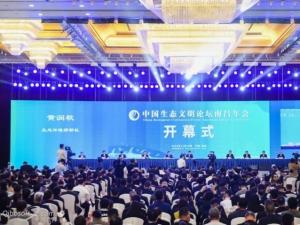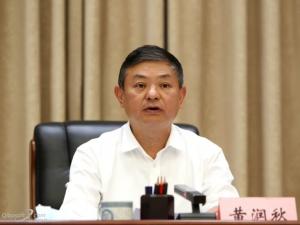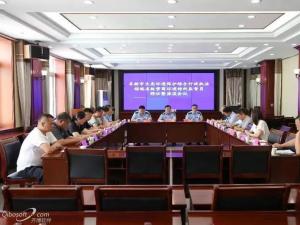AN eva lUATION OF THE CHINESE LEGAL SYSTEM(三)
|
s are concealed in this mechanism. Therefore, prompt adjustment is needed for the long run. 5 管子 . 乘马数 (Guanzi . Chengmashu), Guangxi Normal University Press (Guilin), 2005. 108 FRONTIERS OF LAW IN CHINA [Vol. 8: 103 (3) Legal system of China’s sustainable development. The role of legal and political instruments is clarified by specific objectives. In general, legal and political instruments provide a means for achieving specific objectives; the instruments themselves are not the ends. As obvious as that may sound, a major problem of the environmental debate in the United States is the extent to which specific legal instruments have become associated with specific positions and objectives. When we agree on substantive environmental goals, it becomes reasonably clear that the cheapest but most effective instruments will do just fine, regardless of what they are. Successful implementation is more likely, if decision makers are willing to be both creative and flexible in understanding what legal and policy tools are available, and in choosing the right mix of laws and policies for their particular purposes.6 Trust principles as well as national policies cannot get out of the boundary of laws for a long time. Article 2 of the Treaty on European Union sets up the following objectives, “to promote economic and social progress and a high level of employment and to achieve balanced and sustainable development, in particular through the creation of an area without internal frontiers, through the strengthening of economic and social cohesion and through the establishment of economic and monetary union, ultimately including a single currency in accordance with the provisions of this Treaty.” The Amsterdam Treaty establishes sustainable development as the core objective of the European Union. Many European countries have incorporated sustainable development in their legal documents. In 1991, China incorporated sustainable development into law for the first time. The National Environmental Protection Bureau issued the Interim Measures for Environmental Supervision Work. Later, China’s Agenda 21 provides that sustainable development should be the strategy that coordinates the actions of government divisions, social classes and all the people. Afterwards, some legislations incorporated sustainable development. These provisions gradually formed the current Chinese legal system of sustainable development (see Table 1). 6 John C. Dernbach, Development Goals and Indicators: Targets, Timetables, and Effective Implementing Mechanisms: Necessary Building Blocks for Sustainable Development, 6 Wm. & Mary Envtl. L. & Pol’y Rev. 79, 109 (2004). 2013] CHINESE LEGAL SYSTEM ON SUSTAINABLE DEVELOPMENT 109 Table 1 Framework of Relevant Provisions of China on Sustainable Development . General Provisions7 Ecological Resources Protection8 Pollution Control9 Clean Production and Energy Law10 Urban and Rural Planning and Land Management11 Disaster Prevention12 Other Fields13 Laws 1 5 4 4 2 1 3 Administrative regulations 2 1 Departmental regulations 2 Government policies 8 3 3 3 Total 9 10 4 4 7 2 6 Statistical deadline: 15 June 2011. 7 General provisions include: Law of People’s Republic of China on Environmental Impact Assessment (2002), Interim Measures for Environmental Supervision Work (1991), China’s Agenda 21 (1994), Decision of the National People’s Congress on Strengthening the Supervision of National Economy (2000), Action Program of China’s Sustainable Development in the Early 21st Century (2003), China’s National Plan for Addressing Climate Change (2007), Decision of the National People’s Congress on Actively Responding to Climate Change (2009), Resolution on the Implementation of 2010 Plan for National Economic and Social Development and 2011 Plan of National Economic and Social Development (2011). 8 Provisions on ecological resources protection include: Law of the People’s Republic of China on Marine Environment Protection (1999 Amendment), Law of the People’s Republic of China on Anti-desertification (2001), Water Law of the People’s Republic of China (2002 Amendment), Law of the People’s Republic of China on the Protection of Offshore Islands (2009), Law of the People’s Republic of China on Water and Soil Conservation (2010 Amendment), Regulation on the Enforcement of Forest Law of the People’s Republic of China (2000), Regulations on the Management of Landscape and Famous Sceneries (2006), Suggestions of the State Council on Strengthening Grassland Protection and Construction (2002), Guidance on Promotion of Sustainable Development of Wildlife (2004), Notice of the General Office of the State Council on the Protection and Management of Biological Species (2004). 9 Provisions on pollution control include: Law of the People’s Republic of China on the Prevention and Control of Atmospheric Pollution (2000 Amendment), Grass Land Law of the People’s Republic of China (2002 Amendment), Law of the People’s Republic of China on Prevention and Control of Environmental Pollution by Solid Waste (2004 Amendment), Law of the People’s Republic of China on Prevention and Control of Water Pollution (2008 Amendment). 10 Provisions on clean production and energy include: Law of the People’s Republic of China on Promotion of Cleaner Production (2002), Law of the People’s Republic of China on Energy Conservation (2007), Promotion of Energy Law to Recycling Economy (2008), Renewable Energy Law of the People’s Republic of China (2009). 11 Provisions on urban planning and land management include: Land Administration Law of the People’s Republic of China (2004 Amendment), Law of the People’s Republic of China on Urban and Rural Planning (2007), National Sustainable Development Experimental Zone Management Measures (2007 Amendment), National Sustainable Development Demonstration Area Management Measures (2007), Notice of Distribution of Action to Promote Regional Technology Sustainable Development (2007), Suggestions of the State Council on Promotion of Sustainable Development of Resource-Based Cities (2007), Notice on Distributing the Administration Measures on National Sustainable Development Experimental Zone (2010). 12 Provisions on disaster prevention include: Law of the People’s Republic of China on Protecting Against and Mitigating Earthquake Disasters (2008 Amendment), Regulations on Earthquake Prevention (1998). 13 Other provisions include: Law of the People’s Republic of China on Popularization of Science and Technology (2001), Agriculture Law of the People’s Republic of China (200 |
我来说两句
已有0评论 点击全部查看






